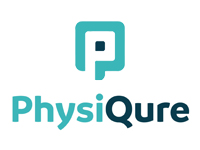Bounce back to healthy life with physiotherapy and back pain exercises. Physical therapy (PTA) is often the first recourse for back pain problems. The best time for physiotherapy is after a year of back pain caused by overexertion or injury.
After a back injury to your back muscles need time to heal and the muscles of your buttocks and legs need time to recover from any shock. Physiotherapy will help you learn how to move your body without injuring your back again and strengthen your back muscles so they can protect your spine and legs in the future.
How to restore your life with physiotherapist
The purpose of physical therapy is to restore your movements to their normal state. You will learn how to move correctly using the muscles of your buttocks and legs and how to brace yourself in the correct position. Physiotherapy may also involve assessment, education and testing to find out where any injuries may be present. Back pain exercises are used on a regular basis in physiotherapy as they allow your muscles to heal more quickly and painlessly than with back pain exercises alone. These exercises are part of your PTA program, a series of lower back exercises designed to strengthen and improve your health.
One of the common injuries from the workplace is a strain. The stress of carrying out job-related tasks can lead to a number of back pains and other musculoskeletal problems. This can include a hammering back or a twist. Often when we injure our backs it is not noticeable at first as we may think the pain is just a muscle ache. The more we work the muscles in our backs the worse it becomes and the more likely it is that we will develop chronic back pain, or spondylolisthesis.
Once back pain becomes chronic, your doctor will probably refer you to a rehabilitation specialist, like a physiotherapist, for treatment. The physiotherapist is the best person to guide you through a programme of back pain exercises and stretches designed to rebuild your strength and to ease the tightness in the muscles of your back. You will be taught how to protect your spine by avoiding activities that put unnecessary pressure on the back. For example, if you sit at a desk all day, your shoulders and hips will be at increased risk of injury if you stand up and move around occasionally.
Your therapist will design a suitable back pain exercise regime for you, consisting of a regular exercise regime of low intensity, high-interval bursts of exercise designed to build strength and to relieve your back pain. You will be taught the basics of fitness and nutrition, such as how much fibre, protein and carbohydrates you need to stay healthy and fit. You will learn how to carry out core body movements correctly so that you avoid the onset of future back pain.
As you progress through your therapy, your specialist will be able to change your back pain exercises to targeted stretches and strengthening exercises that are specifically designed to rebuild your strength and to relieve your stiffness. By combining exercises for your low back with gentle stretching, your muscles will be given a chance to recover and grow stronger. You may notice improvements fairly quickly, within weeks.
You will continue to progress at a steady pace so that you achieve the best results possible. You will probably need to start your exercise regime gradually, varying the intensity and the number of exercises each week. Over time, you will be back to full fitness before your physiotherapist will consider removing the brace.
